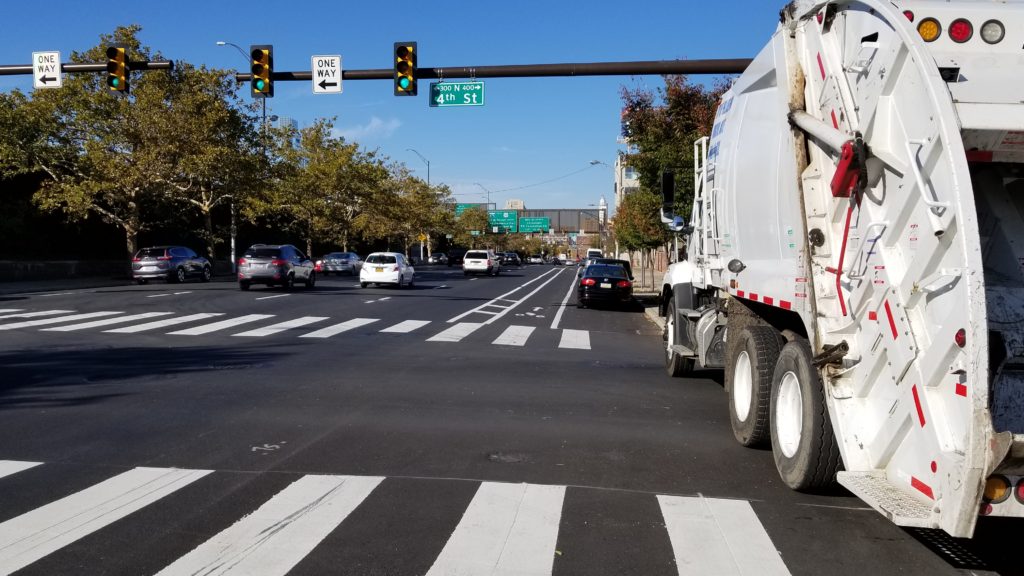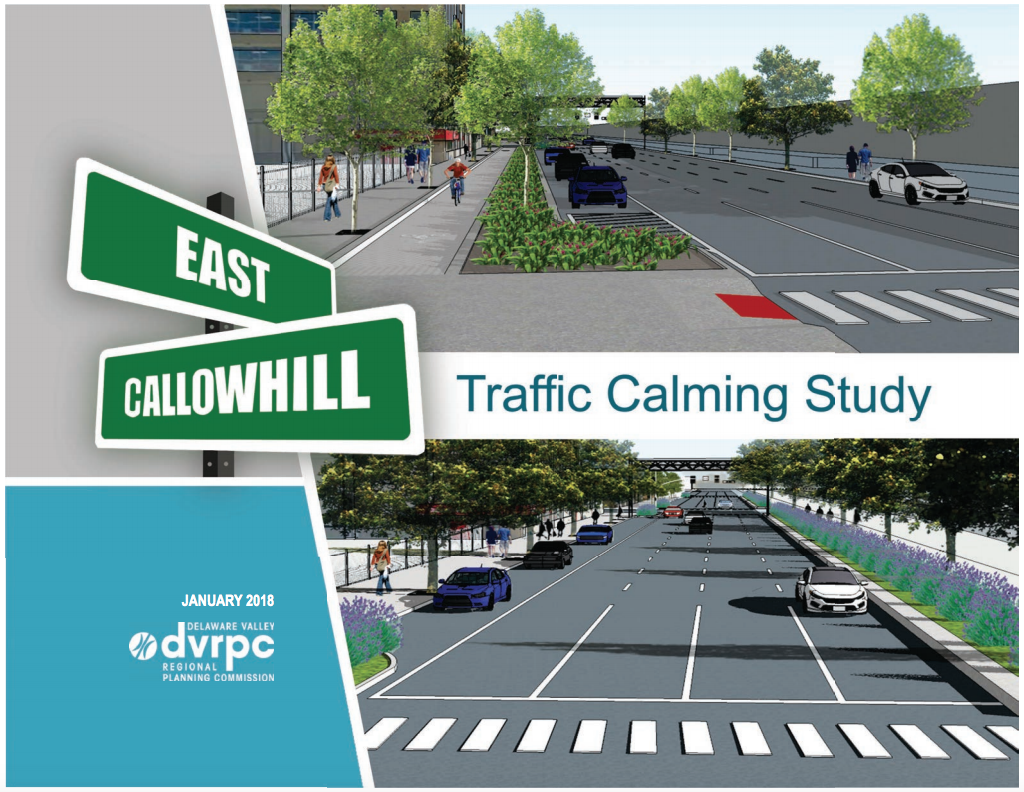As a feeder route to the Vine Street Expressway, Callowhill Street between 2nd and 6th Streets is as wide as 76 feet with 3 to 5 lanes of traffic. This creates a barrier for bicycle- and pedestrian-travel along or across.
The City of Philadelphia asked the Delaware Valley Regional Planning Commission (DVRPC) conduct a study to look at taming traffic and suggesting improvements to the walking and bicycling environments.

A short buffered bike lane on the 400 block of Callowhill St.
According to the Executive Summary, “Four different road diet configurations were evaluated. Based on the results, two alternatives were identified on a 4 lane road.” The Study recommends 1) A curb/landscaped protected bike lane and larger sidewalk and green infrastructure, and 2) A 4-lane configuration with no bike lane and much larger green infrastructure barrier.
We strongly support the implementation of Option 1.
It will provide connectivity between the 2nd Street Bike Lane and the 5th and 6th St bike lanes as well as the Ben Franklin Bridge. Having enough room for protected bike lanes on Center Philadelphia streets is rare, and frankly, there are no residential parking issues, which is a frequent source of project opposition, on this stretch of road.

Option 1 which includes a one way curb protected bike lane.
Callowhill Street was designed for AM Rush Hour traffic coming off I-95 in the morning. That leaves a street that is severely underutilized the rest of the day. Taking a lane of traffic out and reducing the width of each lane by one foot would reduce the crossing distance by 16 feet (about 6 seconds for an older pedestrian). But with four lanes of traffic, Callowhill will still feel like a highway. Hopefully the vision of Callowhill Street will further evolve as an urban place safe for all ages and abilities.

